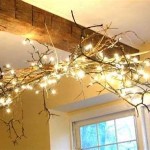Creating an Asian-Themed Room Decor: A Comprehensive Guide
Asian-themed room decor encompasses a diverse range of styles, drawing inspiration from countries like Japan, China, Korea, Thailand, and Vietnam. Understanding the specific characteristics of each culture is crucial in achieving an authentic and aesthetically pleasing space. This article provides a detailed overview of the key elements involved in designing an Asian-themed room, focusing on color palettes, furniture choices, decorative accents, and spatial arrangement, to help create a balanced and harmonious living environment.
Understanding Cultural Nuances: A Foundation for Design
Before embarking on a design project, it's essential to research the specific cultural aesthetic to be replicated. Japanese design, for instance, emphasizes minimalism, natural materials, and a connection to the outdoors. Chinese design, on the other hand, often incorporates vibrant colors, intricate patterns, and symbolic motifs. Korean design prioritizes simplicity, functionality, and the use of natural elements like wood and paper. Neglecting these nuances can result in a room that feels generic and lacks the intended cultural authenticity.
For example, replicating a Japanese-style room requires an understanding of concepts like "wabi-sabi," which embraces imperfection and transience. This translates to the use of natural, unrefined materials and a deliberate avoidance of excessive ornamentation. In contrast, a Chinese-themed room might feature elements like silk screens, lacquered furniture, and decorative objects featuring dragons, phoenixes, or other auspicious symbols, reflecting the cultural emphasis on prosperity and good fortune.
Researching the specific historical periods within each culture is also beneficial. A room inspired by the Ming dynasty in China will have a different ambiance than one reflecting the Qing dynasty. Similarly, the Heian period in Japan offers a distinct aesthetic compared to the Edo period. This historical context provides a deeper understanding of the design principles and material choices prevalent during those eras.
Key Elements of Asian-Themed Room Decor
Several core elements are commonly found in Asian-themed room decor, regardless of the specific cultural influence. These include a focus on natural materials, a minimalist approach to furniture, the incorporation of symbolic imagery, and the creation of a balanced and harmonious space.
Color Palettes: Asian design generally favors natural and muted color palettes. Earthy tones like browns, greens, and grays are frequently used, often contrasted with pops of color like red, black, or gold. Japanese design typically incorporates serene colors such as white, beige, and light wood tones to create a sense of calm and tranquility. Chinese designs often feature more vibrant colors like red and gold, representing good fortune and prosperity. Korean design often uses natural dyes, resulting in muted and earthy tones. The use of color should be purposeful and balanced, avoiding overwhelming the space with excessive vibrancy or stark contrasts.
Furniture: Furniture in Asian-themed rooms is typically low to the ground, simple in design, and made from natural materials like wood, bamboo, or rattan. Japanese design features tatami mats, futons, and low tables, promoting close proximity to the floor. Chinese design often incorporates lacquered furniture with intricate carvings and embellishments. Korean furniture emphasizes functionality and can include elements like low tables, floor cushions, and wooden chests. The focus is on creating a space that is uncluttered and promotes a sense of spaciousness.
Textiles and Fabrics: Textiles play a significant role in Asian-themed decor. Natural fabrics like silk, cotton, and linen are commonly used for curtains, cushions, and upholstery. Japanese design often incorporates shoji screens made from translucent paper, allowing soft, diffused light to enter the room. Chinese design may feature silk screens with intricate embroidery or painted landscapes. Korean design often uses natural dyes and woven fabrics to create a sense of warmth and texture. The choice of textiles should complement the overall color palette and aesthetic of the room.
Decorative Accessories: Decorative accessories are essential for adding personality and cultural authenticity to an Asian-themed room. These can include items like bonsai trees, calligraphy scrolls, porcelain vases, and traditional artwork. Japanese decor often features minimalist arrangements of flowers in a simple vase, known as ikebana. Chinese decor may incorporate ceramic figurines, jade ornaments, and lucky charms. Korean decor often features pottery, traditional masks, and handcrafted paper lanterns. The key is to select accessories that are meaningful and contribute to the overall harmony of the space.
Creating a Balanced and Harmonious Space: Design Principles
Beyond the individual elements, achieving a truly authentic Asian-themed room requires adherence to certain design principles that emphasize balance, harmony, and a connection to nature. These principles often reflect the philosophical underpinnings of the cultures from which the designs originate.
Spatial Arrangement: The layout of the room is crucial in creating a sense of balance and harmony. Asian design often emphasizes open space and a minimalist approach to furniture arrangement. Japanese design incorporates the concept of "ma," which refers to the empty space between objects, allowing the eye to rest and the mind to find peace. Chinese design may incorporate elements of feng shui, which focuses on the flow of energy within a space to promote well-being and prosperity. Korean design prioritizes functionality and allows for flexible use of space. The key is to create a layout that is both aesthetically pleasing and conducive to relaxation and contemplation.
Lighting: Lighting plays a significant role in creating the desired ambiance in an Asian-themed room. Soft, diffused lighting is generally preferred over harsh, direct light. Japanese design often incorporates paper lanterns and shoji screens to create a warm and inviting glow. Chinese design may feature ornate chandeliers or lanterns with intricate designs. Korean design often uses natural light supplemented by soft, indirect lighting. The goal is to create a space that is both functional and aesthetically pleasing, promoting a sense of calm and tranquility.
Connection to Nature: A strong connection to nature is a common thread throughout Asian design. This can be achieved through the use of natural materials, the incorporation of plants and flowers, and the creation of views to the outdoors. Japanese design often features gardens or courtyards that are visible from within the house. Chinese design may incorporate elements of landscape painting and the use of natural motifs like bamboo and flowers. Korean design often incorporates natural materials like wood and stone to create a sense of connection to the earth. The key is to bring the outdoors in, creating a space that is both beautiful and restorative.
In conclusion, designing an Asian-themed room decor requires an understanding of the specific cultural aesthetic being replicated, the careful selection of appropriate materials and furniture, the incorporation of symbolic imagery, and adherence to design principles that promote balance, harmony, and a connection to nature. By carefully considering these factors, it is possible to create a space that is both aesthetically pleasing and culturally authentic.

Asian Inspired Bedrooms Design Ideas Pictures

10 Tips To Create An Asian Inspired Interior Decoist

Bring Asian Flavor To Your Home 36 Eye Catchy Ideas Digsdigs

How To Design An Asian Themed Bedroom Furniture And Decoration Ideas

10 Tips To Create An Asian Inspired Interior Decoist

Top 5 Asian Living Room Design Ideas You Ll Love Designcafe

Home Decorating Ideas With An Asian Theme

Asian Inspired Bedrooms Design Ideas Pictures Bedroom Decor Style

Incorporating Asian Inspired Style Into Modern Décor

Asian Inspired Bedrooms Design Ideas Pictures







